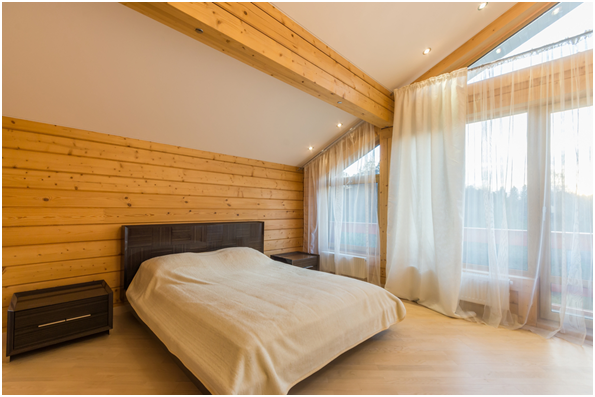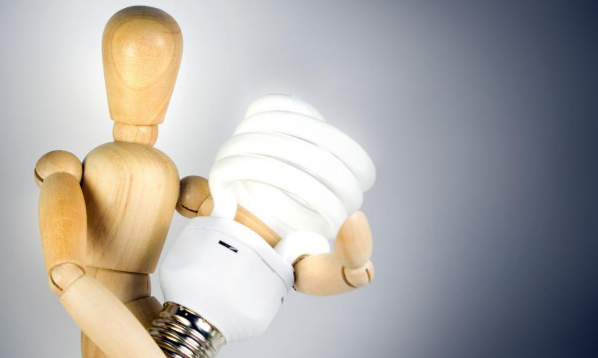If you’re looking to both decorate your windows and save energy at the same time, residential window coverings are your best bet. These can come in many different forms, such as:
Awnings
Blinds
Draperies
High-Reflectivity Films
Insulated Panels
Mesh Window Screens
Overhangs
Shades
Shutters
Storm Panels
All of these window coverings have the potential to reduce your energy costs by a great deal, so let’s take a more in-depth look at them.
Awnings can lower your gain of solar heat by a lot during the summer. On west-facing windows you can decrease the gain of solar heat up to 77%, and on south-facing ones you can lower it up to 65%. You can have the awnings customized to fit just one window or you can choose to have them shade a whole side of the home. Awnings used to be made with canvas or metal, which needed re-covering once or twice per decade, but today’s awnings are usually made using synthetic fibers that are resistant to fading and mildew, as well as water-resistant.
When choosing your awning fabric you need to keep in mind that light-colored awnings will tend to reflect more heat away from your house, and tightly woven opaque material works best. Thanks to new hardware like lateral arms, awnings can be easily rolled up during the winter in order to allow natural sunlight to make its way through.
Window blinds are another effective way to reduce your gain of solar heat. Interior blinds aren’t very effective at preventing heat loss in the winter, but during the summer they can be used to reflect sunlight towards a ceiling that is light colored and diffuse heat gain by as much as 45%. Another option for a window blind is to use exterior mounted roller blinds. These are typically made from vinyl, aluminum, steel or wood, and are placed on top of the window and guided by side channels.
Another kind of residential window coverings are draperies. There are so many different types of window draperies that not many generalizations can be made regarding their energy-saving abilities; however, closing them on summer days can definitely help reduce heat gain. In the winter, draperies can reduce heat loss as much as 10% in some estimates. Using draperies in a two-team tandem is the most effective way to maximize their energy efficiency.
High-reflectivity window films are able to block heat gain in the summer, but they also shield from the sun’s rays during winter. The most effective reflectivity films are silver; these perform much better than colored and transparent films. The best places to use high-reflectivity window films are on east-and west-facing window locations..
Insulated panels made from foam-board are another common way of saving energy with residential window coverings. These panels have seals made from Velcro or magnetic tape along the edges that don’t allow any moisture or air to get in. One main benefit of these is that they are pretty inexpensive and don’t require the use of any hinges or latches.
Mesh window screening is a good way to reduce summer heat gain and are most effective on west- and east-facing windows. Overhangs are another excellent way to cut your energy bill in half, and if they are properly placed, they can be adjusted to let sunlight in during winter. These are most effective for shading south-facing window locations, and should be added before or during construction to ensure proper installation.
Of all the things you can add to your windows to keep out sunlight and save on your energy bill, window shades are probably the simplest. Your shades need to be hung as near the window as possible and held as closely against the wall as you can in order to create a sealed off air-space. During the summer, shades should be lowered on sunlit window locations and raised on south-facing windows during the winter.
Dual shades that feature a light color on one of the sides and a dark color for the other are very effective, as they can simply be reversed when the seasons change. If you really want to splurge, roman shades and quilted roman shades are so effective they serve as both air barriers and as insulation, and as such are the most effective of the described methods in controlling air infiltration. You can also opt for cellular shades or pleated shades, which have the same effect but with less control over air infiltration.
Interior or exterior window shutters can also help lower heat loss and gain within your home. Exterior shutters provide additional benefits like added security, weather protection, no thermal shock at all to closed windows and no extra use of interior space.
Storm panels are great for reducing heat loss in the winter, and are also less expensive than double-glazed windows. Both exterior and interior panels will work, but interior ones cost less.
Residential window coverings are one of the best ways to save money on your energy bill. Whether you are trying to keep heat in or out, these methods listed here will most certainly save you a lot of money every month if they are implemented correctly.









